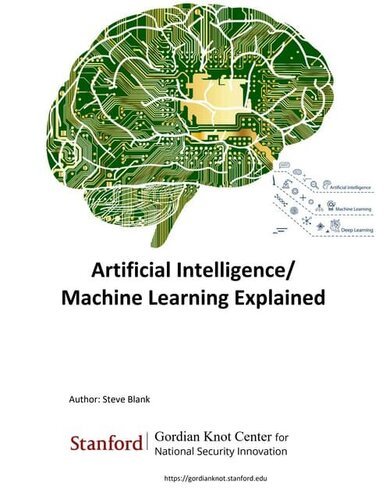All Activity
- Last week
- zergfazeg
-
ads
- Earlier
-
Is Artificial Intelligence Capitalized ?
Understanding the Capitalization of Artificial Intelligence The question of whether "Artificial Intelligence" should be capitalized often arises in writing. The answer depends on the context in which the term is used. Understanding the rules of capitalization can help ensure that your writing is clear and consistent. When to Capitalize "Artificial Intelligence" Proper Nouns: If "Artificial Intelligence" is used as a proper noun, such as the name of a specific course, program, or event, it should be capitalized. For example: "I am enrolled in the Artificial Intelligence course at Stanford University." "The Artificial Intelligence Conference will be held next month." Titles and Headings: In titles and headings, it is common to capitalize major words, including "Artificial Intelligence." For example: "The Future of Artificial Intelligence in Healthcare." When Not to Capitalize "Artificial Intelligence" General Use: When referring to the concept of artificial intelligence in a general sense, it is not necessary to capitalize the term. For example: "Artificial intelligence is transforming the way we live and work." "The development of artificial intelligence has accelerated in recent years." Adjectives: When "artificial intelligence" is used as an adjective, it is typically not capitalized. For example: "The company is developing an artificial intelligence system for customer service." Conclusion The capitalization of "Artificial Intelligence" depends on the context in which it is used. When referring to the general concept, it is not capitalized. However, when used as a proper noun or in titles and headings, it should be capitalized. By following these guidelines, you can ensure that your writing is clear and consistent.
-
Are Artificial Intelligence Robots ?
Understanding the Relationship Between AI and Robots Artificial Intelligence (AI) and robots are often mentioned together, but they are not the same thing. While AI can be integrated into robots to enhance their capabilities, AI itself is not a robot. Understanding the distinction between AI and robots is important for grasping how these technologies are used in various applications. What Is Artificial Intelligence (AI)? AI refers to the broader concept of machines mimicking human intelligence. It enables computers to perform tasks that typically require human thinking, such as problem-solving, decision-making, and language processing. AI can be divided into two main categories: narrow AI, which focuses on specific tasks, and general AI, which aims to replicate human cognitive abilities. What Are Robots? Robots are physical machines that can perform tasks autonomously or semi-autonomously. They are often equipped with sensors, actuators, and control systems that allow them to interact with their environment. Robots can be used in a wide range of applications, from manufacturing and healthcare to entertainment and exploration. How AI and Robots Work Together AI can be integrated into robots to enhance their capabilities. For example, AI-powered robots can use machine learning algorithms to improve their performance over time. These robots can learn from their experiences, adapt to new situations, and make decisions based on data. Examples of AI-Powered Robots Autonomous Vehicles: Self-driving cars use AI to navigate roads, detect obstacles, and make real-time driving decisions. Industrial Robots: AI-powered robots are used in manufacturing to perform tasks such as assembly, welding, and painting. Service Robots: Robots in the service industry, such as those used in hotels or restaurants, use AI to interact with customers and perform tasks like cleaning or delivering items. Healthcare Robots: AI-powered robots are used in healthcare for tasks such as surgery, patient care, and rehabilitation. Conclusion AI and robots are distinct but complementary technologies. While AI refers to the intelligence that enables machines to perform tasks, robots are physical machines that can carry out those tasks. By integrating AI into robots, we can create machines that are more intelligent, adaptable, and capable of performing complex tasks in various industries.
-
Are Artificial Intelligence Dangerous ?
Understanding the Risks of Artificial Intelligence Artificial Intelligence (AI) has the potential to revolutionize industries and improve our daily lives. However, as with any powerful technology, there are concerns about the potential dangers of AI. While AI offers numerous benefits, it also poses risks that need to be carefully managed. Potential Dangers of AI Job Displacement: One of the most commonly cited risks of AI is job displacement. As AI-powered automation becomes more prevalent, there is a concern that many jobs, particularly those involving repetitive tasks, could be replaced by machines. Bias and Discrimination: AI systems are only as good as the data they are trained on. If the training data contains biases, the AI system may perpetuate or even amplify these biases, leading to unfair or discriminatory outcomes. Privacy Concerns: AI systems often rely on large amounts of data, including personal information. This raises concerns about privacy and the potential for misuse of data by organizations or malicious actors. Security Risks: AI systems can be vulnerable to cyberattacks. If an AI system is compromised, it could be used to carry out malicious activities, such as spreading misinformation or launching cyberattacks. Autonomous Weapons: The development of AI-powered autonomous weapons raises ethical and security concerns. There is a risk that such weapons could be used in ways that violate international law or lead to unintended consequences. Mitigating the Risks of AI Ethical AI Development: It is important to develop AI systems that are ethical and transparent. This includes ensuring that AI systems are free from bias and that their decision-making processes are understandable to humans. Regulation and Oversight: Governments and organizations should establish regulations and oversight mechanisms to ensure that AI is used responsibly. This includes setting standards for data privacy, security, and ethical AI development. Public Awareness: Raising public awareness about the potential risks of AI is crucial. This can help ensure that individuals and organizations are informed about the potential dangers and can take steps to mitigate them. Conclusion While AI offers numerous benefits, it also poses potential dangers that need to be carefully managed. By developing ethical AI systems, establishing regulations, and raising public awareness, we can mitigate the risks and ensure that AI is used responsibly for the benefit of society.
-
AI Is Here to Stay: Love It or Hate It, You Can’t Ignore It
The Unstoppable Rise of AIArtificial Intelligence (AI) is no longer a futuristic concept. It has become a core part of our daily lives. From smart assistants to automated customer service, AI is shaping industries at an unprecedented rate. Businesses, individuals, and governments must adapt or risk falling behind. AI in Everyday LifeYou may not realize it, but AI influences your daily routine. When you unlock your phone using facial recognition, AI is at work. Virtual assistants like Siri and Alexa rely on AI algorithms to understand and respond to commands. Even social media platforms use AI to curate your feed, making sure you see content that interests you. How AI is Revolutionizing BusinessesCompanies across industries are integrating AI to optimize processes. Here are some key sectors where AI is making a significant impact: 1. HealthcareAI helps doctors diagnose diseases faster and more accurately. It also enhances drug discovery and personalizes treatment plans based on patient data. 2. FinanceBanks and financial institutions use AI for fraud detection, risk assessment, and automated trading. AI-driven chatbots also improve customer service by providing instant support. 3. E-commerceAI-powered recommendation systems boost sales by analyzing user behavior. Personalized ads and chatbots enhance the shopping experience, leading to higher conversions. 4. ManufacturingAutomation and robotics powered by AI increase efficiency, reduce costs, and minimize human errors. Predictive maintenance helps companies prevent costly equipment failures. The Debate: AI as a Friend or Foe?AI sparks mixed reactions. Some see it as a powerful tool for innovation, while others fear job displacement and ethical concerns. The Benefits of AIIncreases Efficiency – AI automates repetitive tasks, saving time and resources. Enhances Decision-Making – Data-driven insights help businesses make better choices. Improves Customer Experience – AI chatbots and personalized recommendations boost user satisfaction. Advances Research and Development – AI accelerates innovation in various fields, from medicine to space exploration. The Challenges of AIJob Displacement – Automation could replace certain jobs, requiring workforce adaptation. Bias and Ethics – AI systems can inherit biases from training data, leading to unfair outcomes. Security Risks – AI-driven cyber threats pose significant risks to personal and business data. How to Adapt to the AI-Driven FutureIgnoring AI is not an option. To stay relevant, individuals and businesses must embrace change. Here’s how: Learn AI Skills – Upskilling in AI-related fields can open new career opportunities. Integrate AI into Business – Companies should explore AI tools to improve efficiency and competitiveness. Advocate for Ethical AI – Encouraging responsible AI development ensures fairness and security. Final ThoughtsAI is here to stay. Whether you embrace it or resist it, its influence is undeniable. Instead of fearing AI, learning how to leverage its potential can lead to growth and success. The key is to adapt, innovate, and ensure AI benefits everyone.
-
Are Artificial Intelligence Jobs in Demand ?
Understanding the Demand for Artificial Intelligence Jobs Artificial Intelligence (AI) has become a transformative force across industries, leading to a surge in demand for AI professionals. From healthcare to finance, companies are leveraging AI to drive innovation, improve efficiency, and gain a competitive edge. This has created a growing need for skilled individuals who can develop, implement, and manage AI technologies. Why Are AI Jobs in Demand? Industry Adoption: AI is being integrated into various sectors, including healthcare, finance, retail, and manufacturing. This widespread adoption has led to a need for AI experts who can design and deploy AI solutions tailored to specific industry needs. Technological Advancements: The rapid advancement of AI technologies, such as machine learning, natural language processing, and computer vision, has created new opportunities for professionals with expertise in these areas. Data-Driven Decision Making: Organizations are increasingly relying on data to make informed decisions. AI professionals are needed to develop algorithms that can analyze large datasets and provide actionable insights. Automation and Efficiency: AI is being used to automate repetitive tasks, improve operational efficiency, and reduce costs. This has led to a demand for AI specialists who can develop and implement automation solutions. Types of AI Jobs in Demand AI Researchers: These professionals focus on advancing the field of AI by developing new algorithms and models. Data Scientists: Data scientists use AI and machine learning techniques to analyze data and extract valuable insights. Machine Learning Engineers: These engineers design and implement machine learning models that can learn from data and make predictions. AI Ethicists: As AI becomes more prevalent, there is a growing need for professionals who can address ethical concerns related to AI, such as bias and privacy. AI Product Managers: These managers oversee the development and deployment of AI-powered products and services. Conclusion The demand for AI jobs is on the rise as organizations across industries recognize the potential of AI to drive innovation and efficiency. With the rapid advancement of AI technologies, the need for skilled AI professionals is expected to continue growing. Whether you are a researcher, data scientist, or machine learning engineer, pursuing a career in AI offers exciting opportunities to shape the future of technology.
-
Are Artificial Intelligence and Machine Learning the Same?
Understanding Artificial Intelligence (AI)Artificial Intelligence (AI) refers to the broader concept of machines mimicking human intelligence. AI enables computers to perform tasks that typically require human thinking, such as problem-solving, decision-making, and language processing. AI can be divided into two main categories: narrow AI and general AI. Narrow AI focuses on specific tasks, like voice assistants, while general AI aims to replicate human cognitive abilities. What Is Machine Learning (ML)?Machine Learning (ML) is a subset of AI. It involves the development of algorithms that allow computers to learn from data. Instead of being explicitly programmed, ML models improve their performance through experience. Common applications of ML include recommendation systems, fraud detection, and image recognition. Key Differences Between AI and ML1. Scope and FunctionalityAI is a broad field that encompasses various technologies, including ML, natural language processing (NLP), and robotics. ML specifically focuses on algorithms that learn from data and make predictions or decisions without human intervention. 2. Learning CapabilityAI systems can be rule-based or data-driven. ML relies solely on data to train models, making predictions based on patterns and trends. 3. Human InterventionAI can function with or without human involvement, depending on the complexity of the system. ML requires human input for training, feature selection, and model optimization. How AI and ML Work TogetherAI and ML are interconnected. AI provides the framework for intelligent systems, while ML enhances their ability to improve performance. For example, AI-powered chatbots use ML to refine their responses over time. Similarly, autonomous vehicles rely on ML algorithms to detect obstacles and make real-time driving decisions. Real-World Applications of AI and ML1. HealthcareAI assists in diagnosing diseases and predicting patient outcomes. ML models analyze medical images for early detection of conditions like cancer. 2. FinanceAI-powered fraud detection identifies suspicious transactions. ML algorithms assess creditworthiness for loan approvals. 3. E-CommerceAI chatbots enhance customer service. ML-driven recommendation engines suggest personalized products. 4. MarketingAI automates ad targeting and campaign optimization. ML analyzes customer behavior to predict purchasing patterns. ConclusionAI and ML are closely related but not the same. AI is the broader concept of machine intelligence, while ML focuses on learning from data. Understanding their differences helps businesses leverage these technologies for innovation and efficiency. Both AI and ML continue to evolve, transforming industries worldwide.
-
The Future of Decentralized Finance (DeFi): A Revolution in the Making
What Is DeFi and Why It MattersDecentralized finance (DeFi) is reshaping the financial world. It eliminates intermediaries, offering users direct control over their assets. With blockchain technology, DeFi ensures transparency, security, and efficiency. Key Innovations Driving DeFi ForwardSmart Contracts and AutomationSmart contracts execute transactions automatically, reducing costs and risks. Platforms like Ethereum and Solana enable seamless peer-to-peer interactions. Liquidity Pools and Yield FarmingLiquidity pools power decentralized exchanges (DEXs). Users earn rewards by providing liquidity. Yield farming boosts returns by optimizing asset allocation. Decentralized Lending and BorrowingDeFi lending protocols allow users to borrow without traditional credit checks. Platforms like Aave and Compound offer competitive interest rates. Stablecoins and Financial StabilityStablecoins reduce volatility, making DeFi more accessible. USDC and DAI ensure price stability while maintaining decentralization. Challenges Facing DeFiSecurity Risks and HacksSmart contract vulnerabilities expose DeFi platforms to hacks. Continuous audits and advanced security measures are crucial for user protection. Regulatory UncertaintyGovernments are grappling with DeFi regulations. Compliance frameworks must balance innovation with legal clarity. Scalability and High Gas FeesEthereum’s congestion leads to high transaction fees. Layer-2 solutions like Optimism and zk-rollups aim to solve this issue. The Future of DeFi: What’s Next?Integration with Traditional FinanceInstitutions are exploring DeFi for enhanced efficiency. Hybrid models may bridge the gap between centralized and decentralized systems. Enhanced InteroperabilityCross-chain solutions will connect different blockchains, enabling seamless asset transfers and boosting adoption. Mainstream Adoption and Mass UseUser-friendly interfaces and regulatory clarity will drive DeFi into the mainstream. As technology evolves, financial independence becomes more attainable. ConclusionDeFi is revolutionizing finance with decentralization, transparency, and efficiency. Despite challenges, ongoing innovation ensures a promising future. As adoption grows, DeFi has the potential to redefine global finance for everyone.
-
mohammedwaheed joined the community
-
AI in Entertainment Creating New Music and Art
The Rise of AI in the Creative WorldArtificial intelligence (AI) is reshaping the entertainment industry, driving innovation in music and art. From composing unique melodies to generating breathtaking visual art, AI is a game-changer. By merging technology and creativity, it’s unlocking new horizons for artists and audiences alike. AI in Music CompositionTransforming Music CreationAI-powered tools like AIVA and Amper Music enable musicians to compose original tracks effortlessly. These platforms use machine learning algorithms to analyze vast datasets of musical styles, creating compositions tailored to specific needs. Whether for film scores or personal projects, AI helps musicians save time and explore uncharted territories. Enhancing Music ProductionIn music production, AI simplifies processes like mixing and mastering. Tools like LANDR and iZotope employ advanced algorithms to refine audio tracks, ensuring professional-quality sound. AI also assists in generating loops and beats, allowing artists to focus on creative expression. AI’s Role in Visual ArtCreating Stunning Digital ArtAI programs like DALL•E and DeepArt are revolutionizing digital art creation. These tools generate unique visuals based on textual inputs, offering endless possibilities for artists and designers. AI art challenges traditional methods, pushing the boundaries of creativity. Restoring and Preserving ArtAI is instrumental in restoring damaged artwork and preserving cultural heritage. By analyzing historical patterns and colors, AI restores art to its original glory. This technology ensures that masterpieces withstand the test of time for future generations. Collaboration Between Humans and AIAugmenting CreativityAI serves as a collaborator, not a replacement, for human creativity. Artists leverage AI to gain new perspectives and experiment with novel ideas. This partnership enhances artistic expression, combining the best of human ingenuity and machine precision. Customizing Artistic ExperiencesAI enables personalized experiences for audiences. For instance, Spotify and YouTube use AI to curate music and video recommendations based on user preferences. This tailored approach enhances user engagement and satisfaction. Challenges and Ethical ConsiderationsNavigating Copyright IssuesAI-generated art raises questions about ownership and copyright. Establishing clear guidelines is essential to protect artists’ rights while fostering innovation. Maintaining AuthenticityBalancing AI’s influence with human authenticity is crucial. Over-reliance on AI could dilute the emotional depth that defines art. Striking this balance ensures meaningful creative outputs. The Future of AI in EntertainmentThe potential of AI in music and art is boundless. As technology evolves, it will continue to inspire and empower artists, transforming the creative landscape. By embracing AI, the entertainment industry can explore new realms of artistic expression and redefine the boundaries of creativity. AI is not just a tool; it’s a catalyst for artistic evolution. From composing symphonies to crafting digital masterpieces, its impact is undeniable. As we move forward, the synergy between humans and AI will shape the future of art and music.
-
NeoAdmin changed their profile photo
-
Abdelsalam22 joined the community
-
ayeshakhuram joined the community
-
oromgaada started following AI and Home Renovation: Planning and Visualization
-
oromgaada joined the community
-
capitaine12 joined the community
-
javed joined the community
-
Sumanth Reddy joined the community
-
Muhammad Ismail joined the community
-
AI and Home Renovation: Planning and Visualization
Revolutionizing Home Renovation with AIArtificial Intelligence (AI) is transforming the way homeowners approach renovations. From planning to visualization, AI provides cutting-edge tools that simplify the process. With smart solutions, you can now make informed decisions and turn your dream projects into reality. AI-Powered Design ToolsOne of the standout features of AI in home renovation is its design tools. These platforms use algorithms to generate layouts based on your preferences. Upload a photo of your space, and AI creates tailored suggestions. This saves time and ensures designs match your style and needs. 3D Visualization Made SimpleVisualizing changes is often challenging. AI addresses this by offering 3D rendering tools. You can explore potential designs in a realistic environment. This immersive experience helps you decide on layouts, colors, and furniture placement with confidence. Custom RecommendationsAI learns from your inputs and provides personalized recommendations. Whether you prefer modern, minimalist, or rustic designs, the technology adapts to your taste. It ensures every detail aligns with your vision, down to the color palette and textures. Streamlined Project PlanningPlanning is the backbone of any renovation. AI simplifies this process by breaking down tasks and estimating costs. Using AI, you can create timelines, budget effectively, and avoid unexpected expenses. Accurate Cost EstimationAI tools analyze material prices, labor costs, and project scope to deliver precise estimates. This transparency ensures you stay within budget while achieving high-quality results. Smart SchedulingEfficient project management is essential. AI-generated schedules optimize timelines by considering contractor availability and delivery times. This reduces delays and keeps your renovation on track. Energy Efficiency and SustainabilityHome renovations today prioritize eco-friendliness. AI supports sustainability by identifying energy-efficient solutions. It suggests materials and designs that reduce environmental impact while enhancing your home’s functionality. Green Material SuggestionsAI algorithms recommend sustainable materials like bamboo flooring or recycled wood. These options align with modern green building standards. Optimized Energy UsageFrom solar panel placement to smart thermostats, AI designs solutions that lower utility bills. This makes your home not only stylish but also environmentally responsible. Virtual Reality IntegrationAI integrates with virtual reality (VR) to enhance the renovation experience. VR allows you to "walk through" your redesigned space before construction begins. This interactive tool ensures you’re completely satisfied with the final plan. Enhanced Collaboration with ContractorsAI improves communication between homeowners and contractors. Sharing AI-generated designs and plans ensures everyone is on the same page. This minimizes errors and ensures smooth execution. Conclusion: The Future of RenovationAI is revolutionizing home renovation, making it more efficient, cost-effective, and enjoyable. From 3D visualizations to sustainable solutions, these tools empower homeowners to bring their visions to life effortlessly. Embrace AI for your next renovation project and experience the transformation firsthand.
-
Discover how AI-powered smart devices enhance pet care with monitoring, feeding, and activity tracking solutions.
Revolutionizing Pet Care with Smart TechnologySmart devices are transforming pet care, making it easier and more efficient for owners to keep their pets healthy and happy. From automated feeders to health trackers, technology now offers innovative solutions for every pet’s need. Automated Pet Feeders for Hassle-Free MealsFeeding your pet has never been simpler. Automated feeders allow you to schedule meals and control portions remotely. These devices ensure your pets are fed on time, even if you're away. Some models even include cameras for monitoring mealtime activities. Smart Collars for Health and SafetySmart collars are packed with features like GPS tracking and health monitoring. They help locate lost pets and provide real-time updates on your pet's activity levels, heart rate, and more. These collars are ideal for ensuring your furry friend stays safe and active. Interactive Toys to Keep Pets EngagedAI-powered interactive toys are perfect for entertaining pets when you're busy. These toys stimulate mental activity and prevent boredom by responding to your pet's movements and behavior. They are excellent tools for promoting physical and emotional well-being. Health Monitoring Devices for Better CareAdvanced health monitors track vital signs, sleeping patterns, and even hydration levels. These devices alert you to any unusual changes, enabling early detection of potential health issues. Regular monitoring ensures your pet remains in optimal health. Pet Cameras for Remote InteractionPet cameras allow owners to keep an eye on their pets while away. Equipped with two-way audio, these cameras enable you to talk to your pet and even dispense treats. Some models include motion detection to alert you of unusual activity. Smart Litter Boxes for a Cleaner HomeSmart litter boxes automatically clean themselves, reducing odor and maintenance. These devices use sensors to detect when your pet has used the box and clean up immediately after. They are a game-changer for cat owners seeking convenience. Voice-Controlled Assistants for Easy ManagementIntegrating smart pet devices with voice-controlled assistants like Alexa or Google Assistant makes managing pet care seamless. From setting reminders to activating devices, these assistants simplify daily tasks and save time. AI-Powered Training ToolsTraining tools equipped with AI help teach pets new commands and improve behavior. These devices offer personalized training programs and track your pet’s progress over time. Consistent training leads to better results and a stronger bond with your pet. Energy Efficiency in Smart DevicesMany smart pet devices are designed to be energy-efficient, reducing their environmental impact. Features like power-saving modes ensure that you can use these gadgets without worrying about high energy consumption. ConclusionSmart devices for pets are revolutionizing the way we care for our furry companions. By leveraging AI and innovative technology, these tools enhance convenience, safety, and overall well-being. Investing in these gadgets ensures a happier, healthier life for your pet and peace of mind for you.
-
AI in Financial Planning: Automated Advisors
What Are Automated Advisors?Automated advisors, or robo-advisors, are digital platforms using artificial intelligence (AI) to provide financial guidance. They help manage investments, allocate assets, and create personalized financial strategies. These tools reduce the need for traditional financial advisors, offering affordable, data-driven solutions. How Do Automated Advisors Work?Automated advisors use algorithms to analyze financial data. By evaluating user inputs such as income, goals, and risk tolerance, they suggest optimal investment strategies. These platforms continuously adjust recommendations based on market trends and user behavior. Key Features of Automated AdvisorsPortfolio Management: Tailored investment portfolios aligned with your goals. Cost Efficiency: Lower fees compared to traditional advisors. 24/7 Availability: Access to financial planning tools anytime. Data-Driven Insights: Accurate recommendations using advanced analytics. Advantages of Automated AdvisorsCost-Effective SolutionsAutomated advisors eliminate high advisory fees, making financial planning accessible to everyone. They charge minimal fees, ensuring greater returns for users. Personalized Financial PlansWith AI, automated advisors provide customized plans. These plans align with individual financial goals, offering a unique user experience. Real-Time AdjustmentsMarkets fluctuate, and so do investment needs. Automated advisors adapt strategies in real-time, ensuring optimal performance. Enhanced AccessibilityAvailable on multiple devices, these platforms cater to users worldwide. This ensures anyone can start investing with minimal effort. Limitations to ConsiderWhile efficient, automated advisors lack human intuition. They may not address complex financial scenarios. Additionally, relying solely on algorithms could pose risks during volatile markets. Who Should Use Automated Advisors?Beginners in InvestingNew investors benefit from easy-to-use platforms with guided instructions. Cost-Conscious IndividualsAutomated advisors are perfect for those seeking affordable financial planning. Tech-Savvy UsersUsers comfortable with technology find these platforms convenient and efficient. Future of Automated AdvisorsThe adoption of AI in financial planning continues to grow. Future advancements may include more intuitive platforms, better predictive analytics, and hybrid models combining human expertise with AI precision. ConclusionAutomated advisors revolutionize financial planning. They provide accessible, affordable, and efficient solutions for users of all experience levels. While not a complete replacement for human advisors, their role in simplifying investments is undeniable. Explore automated advisors today and take charge of your financial future!
-
AI and Home Maintenance: Predictive Repairs
Introduction to Predictive RepairsArtificial intelligence (AI) is transforming home maintenance. By analyzing data, it predicts when repairs are needed, saving time and money. Predictive repairs are reshaping how homeowners handle maintenance tasks. How AI Predicts Home RepairsAI systems use sensors and machine learning to monitor home systems. These devices collect real-time data, identifying potential issues before they escalate. For example, AI can detect unusual vibrations in HVAC systems, signaling a potential breakdown. Role of IoT in Predictive MaintenanceThe Internet of Things (IoT) powers predictive repairs. Smart devices, like thermostats and leak detectors, continuously gather data. This connectivity enables AI to offer precise maintenance recommendations. Benefits of Predictive Repairs for HomeownersCost SavingsPredictive repairs reduce expenses by catching problems early. Preventative action avoids costly emergency repairs. Increased Equipment LifespanRegular maintenance extends the life of home appliances. AI identifies wear and tear, ensuring timely interventions. Enhanced Energy EfficiencyAI helps maintain optimal appliance performance. Efficient systems lower energy consumption, cutting utility bills. Applications of Predictive Repairs in Modern HomesHVAC SystemsAI monitors heating and cooling systems for anomalies. It predicts filter replacements and potential mechanical issues. Plumbing SystemsLeak detection sensors alert homeowners to potential water damage. Predictive AI minimizes the risk of costly repairs. Electrical SystemsAI detects irregularities in electrical circuits. Early warnings prevent potential fire hazards and power outages. How to Implement Predictive Maintenance in Your HomeInvest in Smart DevicesInstall IoT-enabled devices to monitor appliances and systems. These devices provide the data AI needs for predictions. Choose AI-Integrated SolutionsOpt for home automation systems with predictive maintenance features. These platforms simplify monitoring and alerts. Partner with Professional ServicesWork with service providers offering AI-driven maintenance plans. Professionals can interpret AI insights for effective repairs. Future of AI in Home MaintenanceAI will continue evolving, offering more precise predictions. As technology advances, predictive repairs will become standard in modern homes. Automation and integration with emerging technologies will further enhance convenience. ConclusionAI-driven predictive repairs are revolutionizing home maintenance. They save money, extend equipment lifespan, and ensure energy efficiency. Investing in smart technology today prepares your home for a smarter, more reliable future.
-
AI in Fitness Trackers: Motivating Healthier Lifestyles
Introduction: The Rise of AI in Fitness Tracking AI-powered fitness trackers have transformed how people approach health and fitness. These smart devices combine advanced technology with user-friendly features, making it easier to achieve wellness goals. How AI Enhances Fitness TrackingPersonalized Health InsightsAI analyzes user data to deliver customized recommendations. From tracking steps to monitoring heart rate, AI ensures precise and actionable feedback tailored to individual needs. Accurate Data CollectionAI algorithms reduce errors in tracking. Advanced sensors measure metrics like calorie burn, sleep quality, and activity levels with impressive accuracy. Real-Time FeedbackWith AI, fitness trackers offer real-time coaching. Whether you’re running, cycling, or doing yoga, the device adapts to your pace and progress. Encouraging Consistency and MotivationGamification FeaturesAI integrates gamification elements like challenges, rewards, and leaderboards. These features keep users motivated and engaged. Daily Reminders and AlertsAI-powered trackers send reminders to move, hydrate, or complete workouts. This proactive approach promotes healthier habits. Virtual CoachingAI acts as a personal trainer. It provides workout recommendations and adjusts routines based on performance, ensuring continual improvement. Tracking Beyond FitnessSleep MonitoringAI tracks sleep patterns and offers tips to improve sleep quality. A good night’s rest is crucial for overall health. Stress ManagementSome fitness trackers use AI to detect stress levels through heart rate variability. They suggest breathing exercises to promote relaxation. Dietary RecommendationsBy analyzing activity levels and goals, AI can recommend daily calorie intake and nutritional adjustments. Benefits of AI-Driven Fitness TrackersUser-Friendly ExperienceAI simplifies fitness tracking with intuitive interfaces. Even beginners can navigate and use the features effectively. Improved Health OutcomesBy promoting consistency, these trackers lead to better long-term health results. Users can monitor progress and stay accountable. Data SecurityModern fitness trackers prioritize user privacy. Encrypted data storage ensures personal health information stays secure. Future of AI in Fitness TrackingThe future of AI in fitness trackers is promising. Innovations like predictive analytics, advanced health sensors, and seamless integration with other devices are on the horizon. These advancements will further enhance user experience and health outcomes. Conclusion: A Healthier Future with AI AI in fitness trackers is reshaping the way we pursue fitness and well-being. By delivering personalized insights, motivating healthier habits, and expanding tracking capabilities, these devices empower users to lead healthier lifestyles.
-
AI in the Classroom: Enhancing Learning for Students
Artificial Intelligence (AI) is revolutionizing education. By integrating AI tools into classrooms, educators enhance student learning experiences. These technologies personalize education, cater to diverse learning styles, and create dynamic environments. Personalized Learning with AIAI customizes learning experiences. Tools like adaptive learning platforms analyze individual student performance, tailoring lessons to their needs. This ensures that students progress at their own pace, boosting confidence and understanding. Efficient Classroom ManagementTeachers save time with AI-powered administrative tools. Automated grading systems, attendance tracking, and lesson planning allow educators to focus on teaching. These innovations streamline classroom management and reduce workloads. Interactive and Engaging ToolsAI introduces interactive tools like chatbots and virtual reality simulations. These applications make learning engaging, fostering creativity and critical thinking. Students explore complex concepts in an immersive and exciting way. Bridging Learning GapsAI identifies and addresses learning gaps. By analyzing student performance, AI suggests targeted interventions to improve understanding. This helps struggling students catch up and excel. Enhanced Accessibility for All LearnersAI ensures inclusivity by assisting students with disabilities. Text-to-speech tools, language translation apps, and visual aids make learning accessible. These tools break down barriers, creating equal opportunities for all. Real-Time Feedback and AssessmentInstant feedback from AI tools enhances learning. Students receive immediate insights into their performance, allowing them to correct mistakes and improve. Teachers also gain valuable data to adjust teaching methods effectively. Preparing Students for the FutureAI equips students with essential skills for the future. By interacting with AI tools, students develop problem-solving abilities, adaptability, and tech proficiency. These skills are vital for thriving in a technology-driven world. Challenges and Ethical ConsiderationsWhile AI offers many benefits, challenges exist. Data privacy, equity in access, and over-reliance on technology require careful attention. Educators must balance AI integration with traditional teaching methods to ensure holistic learning. ConclusionAI in the classroom is transforming education. By personalizing learning, improving accessibility, and fostering engagement, it creates opportunities for students and teachers alike. With thoughtful implementation, AI paves the way for a brighter educational future.
-
AI in Real Estate: Smart Home Searches and Virtual Tour
Artificial Intelligence (AI) is transforming the real estate industry. From simplifying property searches to enhancing virtual tours, AI is making home buying and selling easier than ever. Let's explore how AI is changing the landscape of real estate. Streamlined Property SearchesAI-powered platforms use advanced algorithms to analyze user preferences. These tools recommend properties based on factors like budget, location, and amenities. This personalized approach saves time and improves the overall search experience. Enhanced Search AccuracyMachine learning algorithms process vast amounts of data. They identify trends and predict market behavior, ensuring users find properties that match their exact requirements. This precision helps buyers make informed decisions quickly. Smart Filters and CustomizationModern real estate platforms offer smart filters. These allow users to refine their searches by criteria such as proximity to schools, green spaces, or public transport. AI ensures these filters provide accurate and up-to-date results. Virtual Tours: A Game-ChangerAI has made virtual tours a staple in real estate. These immersive experiences let buyers explore properties from the comfort of their homes. 3D Mapping and Augmented RealityWith 3D mapping and augmented reality (AR), virtual tours provide detailed property views. Buyers can visualize layouts, inspect interiors, and even plan renovations without visiting the site. Real-Time InteractivityInteractive tours powered by AI allow users to ask questions and receive instant answers. They can zoom in on specific features or request additional images, enhancing their understanding of the property. Predictive Market InsightsAI tools analyze historical data to forecast market trends. These insights help buyers and sellers make strategic decisions. Price PredictionsBy examining factors like neighborhood trends and economic indicators, AI predicts property values. This information empowers buyers to negotiate better deals and sellers to price their properties competitively. Demand AnalysisAI evaluates buyer preferences and demand patterns. Real estate agents can use this data to target their listings effectively, ensuring faster sales. Improving Customer ExperienceAI-driven chatbots and virtual assistants enhance communication between agents and clients. They provide instant responses and schedule viewings, streamlining the entire process. 24/7 AvailabilityChatbots are available around the clock to answer queries. This ensures no lead is missed, improving customer satisfaction and conversion rates. Personalized RecommendationsAI tracks user behavior to offer tailored property suggestions. This keeps potential buyers engaged and increases the likelihood of a sale. Future of AI in Real EstateThe integration of AI in real estate is just beginning. Innovations like predictive maintenance, smart contracts, and AI-driven marketing campaigns promise to redefine the industry further. Sustainable PracticesAI encourages eco-friendly construction by analyzing sustainable building materials and designs. This aligns with the growing demand for green homes. Blockchain IntegrationAI combined with blockchain ensures secure transactions. It reduces fraud and streamlines property transfers, making the process more efficient. Conclusion: Embracing AI for Better ResultsAI is revolutionizing real estate by improving search accuracy, enhancing virtual tours, and providing market insights. It’s reshaping the industry for buyers, sellers, and agents alike. As technology advances, the future of real estate looks smarter and more efficient than ever.
-
Extension Makeing through AI
What do you mean by That ? Looking for extension ?
-
Rahman Qadeer started following Extension Makeing through AI
-
Extension Makeing through AI
Extension Makeing through AI
-
Rahman Qadeer joined the community
-
The Beginners Guide to Artificial Intelligence AI
- 5 downloads
- Version 1.0.0
In the rapidly evolving field of AI, staying up-to-date is essential. Even experienced AI professionals recognize the importance of continuous learning to avoid falling behind. New trends, algorithm updates, and technological breakthroughs are just a few things every AI expert should monitor. If you haven’t been keeping track for any reason, don't worry—we’ve got you covered.Free -
NeoAdmin created a club: The AI Finance Club
-
AI in Energy Management: Smart Grids and Home Efficiency
Artificial Intelligence (AI) is revolutionizing energy management systems worldwide. By integrating AI, smart grids and homes can optimize energy usage, reduce costs, and improve sustainability. Smart Grids: The Backbone of Intelligent Energy DistributionHow AI Enhances Smart GridsAI enables predictive analytics, allowing grids to anticipate energy demand and supply fluctuations. This proactive approach minimizes power outages and ensures a balanced distribution of energy. Real-Time Monitoring and ControlSmart grids equipped with AI analyze real-time data to adjust energy flow dynamically. These systems detect anomalies, ensuring efficient power delivery while reducing wastage. Renewable Energy IntegrationAI simplifies the integration of renewable energy sources, such as solar and wind. It predicts generation patterns, ensuring seamless incorporation into the grid without disrupting supply. AI-Powered Home EfficiencyOptimizing Energy Consumption at HomeAI-driven home automation systems monitor electricity usage, suggesting ways to cut down consumption. Smart thermostats, lights, and appliances adjust based on user behavior, saving energy and costs. Energy-Saving Algorithms in ActionAI uses advanced algorithms to analyze household energy patterns. It recommends optimal settings for appliances and detects devices consuming excessive power. Personalized RecommendationsSmart home systems learn individual preferences, providing tailored energy-saving tips. From adjusting temperatures to scheduling appliance use, AI ensures maximum efficiency. Environmental and Economic BenefitsReducing Carbon FootprintsAI-powered energy management significantly reduces carbon emissions. By promoting renewable energy and minimizing wastage, these systems contribute to a cleaner environment. Cost Savings for ConsumersSmart energy systems lower electricity bills by optimizing usage patterns. Additionally, they enable consumers to sell excess renewable energy back to the grid, further reducing costs. Challenges and Future ProspectsAddressing Data Privacy ConcernsAs AI systems collect vast amounts of data, privacy concerns arise. Ensuring secure and transparent data handling is crucial for widespread adoption. Expanding AI CapabilitiesThe future holds immense potential for AI in energy management. Continuous advancements will make systems smarter, more efficient, and accessible to all households. ConclusionAI is transforming energy management through smart grids and home efficiency solutions. With its ability to optimize energy use, reduce costs, and promote sustainability, AI is paving the way for a greener future. Embracing these innovations can empower individuals and organizations to achieve energy efficiency like never before.
-
AI in Public Transportation: Optimizing Routes and Schedules
Artificial Intelligence (AI) is transforming public transportation by enhancing efficiency and reliability. By integrating AI, transit systems are optimizing routes and schedules, improving the commuter experience. Benefits of AI in Public Transportation AI in public transportation brings numerous benefits. It reduces travel time and minimizes delays. Furthermore, it enhances route planning and schedule management, leading to a more reliable service. Optimizing Routes with AI AI-driven systems analyze vast amounts of data to optimize routes. By considering traffic patterns, passenger density, and historical data, AI suggests the most efficient routes. This reduces congestion and improves travel time. Enhancing Schedule Management AI helps in precise schedule management. By analyzing real-time data, AI adjusts schedules dynamically to accommodate unexpected delays. This ensures timely service and enhances passenger satisfaction. Predictive Maintenance AI enables predictive maintenance, reducing downtime. By monitoring the condition of vehicles and infrastructure, AI predicts potential issues before they become critical. This proactive approach ensures continuous service. Improving Passenger Experience AI enhances the passenger experience by providing real-time updates and personalized travel information. Passengers receive accurate information on arrival times, delays, and alternative routes, making their journey smoother. Case Studies Several cities have successfully implemented AI in their transit systems. For example, London and Singapore have seen significant improvements in efficiency and passenger satisfaction. These case studies highlight the potential of AI in revolutionizing public transportation. Challenges and Solutions Implementing AI in public transportation is not without challenges. Data privacy concerns and the need for significant investment are major hurdles. However, these challenges can be addressed through robust data security measures and strategic planning. Future of AI in Public Transportation The future of AI in public transportation looks promising. As technology advances, we can expect even more sophisticated systems that further enhance efficiency and reliability. Continuous innovation will drive the evolution of smart transit systems. Conclusion AI is a game-changer for public transportation. By optimizing routes and schedules, it improves efficiency, reduces travel time, and enhances the overall commuter experience. Embracing AI in transit systems is essential for creating smarter, more reliable public transportation networks.
-
How will AI-driven autonomous vehicles reshape transportation and urban infrastructure by 2025?
By 2025, AI-driven autonomous vehicles will significantly enhance road safety, reduce traffic congestion, and optimize traffic management through advanced data analysis. This technology will also influence city design, with more pedestrian-friendly spaces and restructured road networks. The result will be safer roads, improved efficiency, and more sustainable urban environments.
-
jessica changed their profile photo
-
How will AI-driven autonomous vehicles reshape transportation and urban infrastructure by 2025?
As autonomous driving technologies improve, how will they impact road safety, traffic management, and city design by 2025?
-
jessica joined the community
-
Maximizing Online Income: Harnessing AI and PTC Websites for Profitable Strategies
Maximizing Earnings with AI and PTC Websites Introduction to AI and PTC Websites Artificial Intelligence (AI) and Paid-to-Click (PTC) websites offer numerous opportunities for online earnings. These platforms can transform how you generate income online, providing both efficiency and profitability. Understanding their potential can help you tap into a steady revenue stream. The Role of AI in Online Earnings AI has revolutionized the way we approach online earning strategies. By leveraging machine learning algorithms and data analytics, AI can optimize your online activities for better results. For example, AI can analyze user behavior on your website, helping you target ads more effectively and boost conversion rates. How PTC Websites Work PTC websites pay users for clicking on ads and visiting websites. These platforms act as intermediaries between advertisers and users. Advertisers pay for clicks, while users earn a small fee for each click they make. The simplicity of this model makes PTC websites an attractive option for those looking to earn extra money online. Combining AI with PTC Websites for Maximum Profit Integrating AI with PTC websites can significantly enhance your earning potential. AI tools can help you identify the most profitable PTC sites, track your earnings, and optimize your clicking patterns. Additionally, AI can assist in automating repetitive tasks, allowing you to focus on high-value activities. Benefits of Using AI in PTC Earnings Increased Efficiency: AI can automate tasks, saving you time and effort. Data-Driven Insights: AI provides valuable insights into your earning patterns and potential improvements. Optimized Earnings: By analyzing trends and behaviors, AI can help you maximize your profits. Enhanced User Experience: AI can personalize your interactions, making the earning process more engaging and effective. Choosing the Right PTC Websites Selecting the right PTC websites is crucial for maximizing your earnings. Look for sites with high user ratings, reliable payment systems, and a wide range of ad options. Research and compare different platforms to find the ones that best suit your needs and preferences. Tips for Maximizing PTC Earnings with AI Use AI Tools: Utilize AI-based tools to automate clicks and optimize your earning strategy. Track Your Performance: Regularly monitor your earnings and adjust your strategies based on data insights. Stay Updated: Keep abreast of new AI technologies and PTC platforms to stay competitive. Diversify Your Activities: Engage with multiple PTC sites to diversify your income streams and reduce risk. Potential Challenges and Solutions While combining AI and PTC websites can be highly profitable, it’s not without challenges. Some users may face issues with AI tool compatibility or encounter fraudulent PTC sites. To mitigate these risks, always verify the legitimacy of PTC platforms and ensure your AI tools are up-to-date and compatible. Conclusion: Embrace the Future of Online Earnings Incorporating AI into your PTC website strategy can unlock significant earning potential. By leveraging advanced technology and smart strategies, you can maximize your online income with minimal effort. Embrace these tools and stay ahead in the ever-evolving landscape of online earnings.



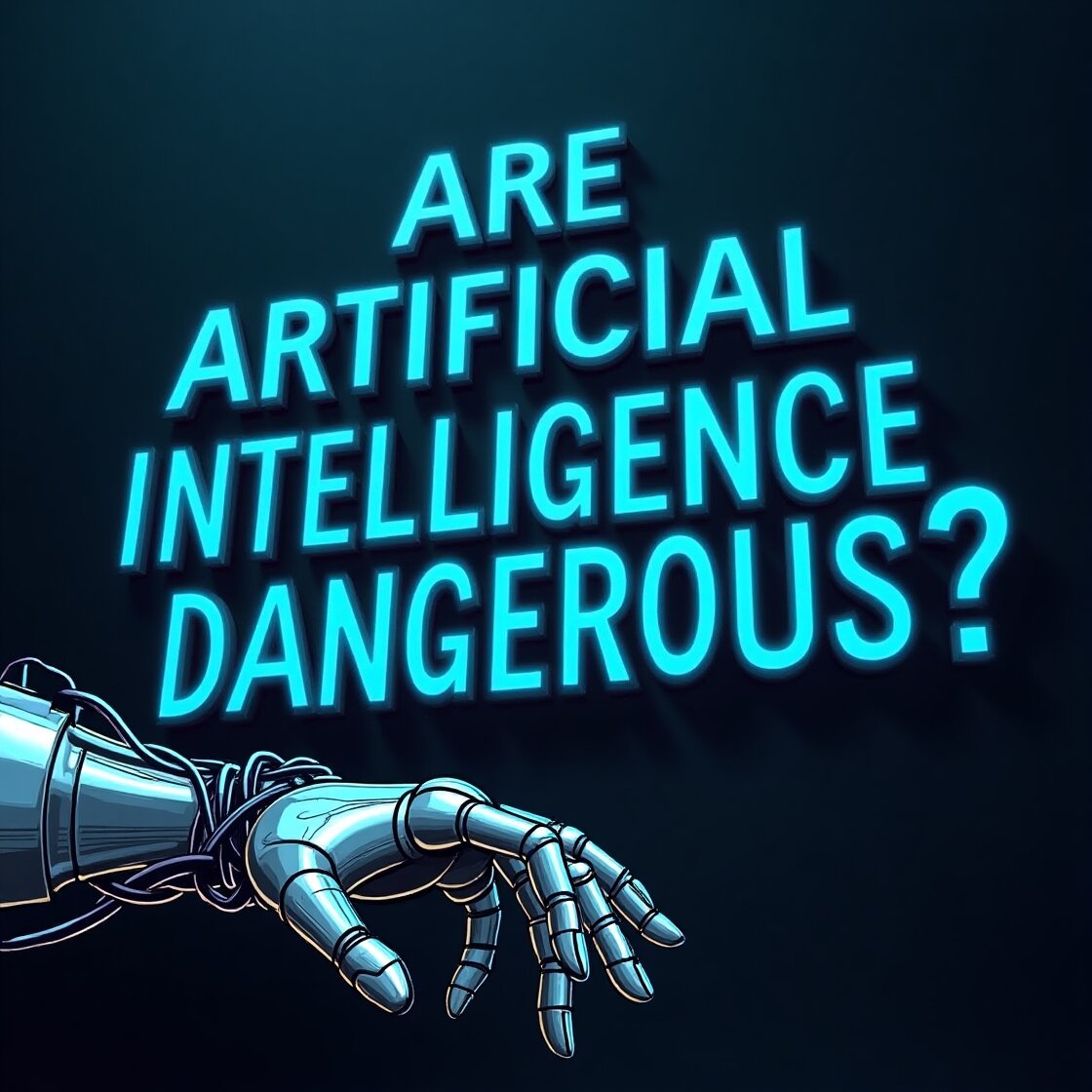

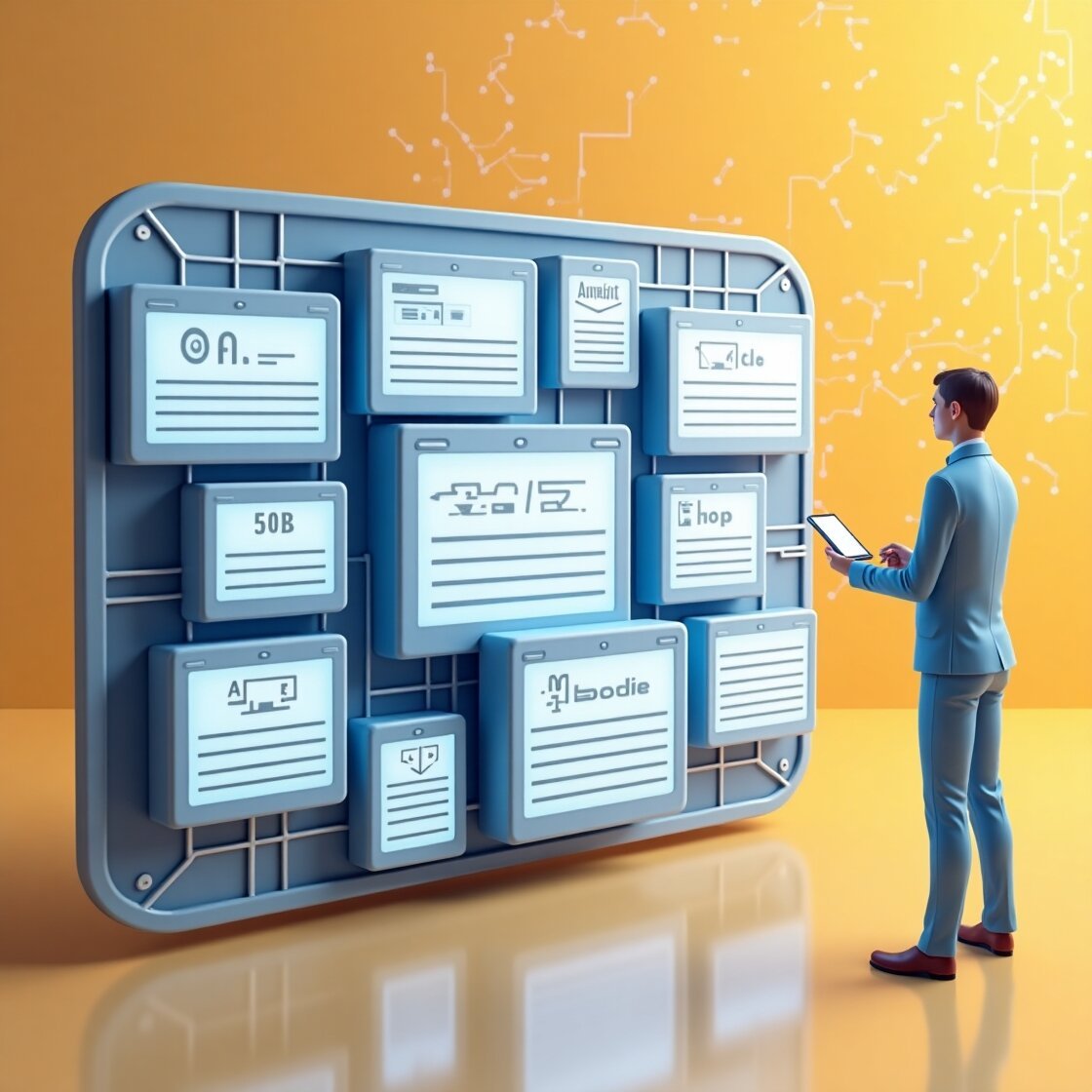
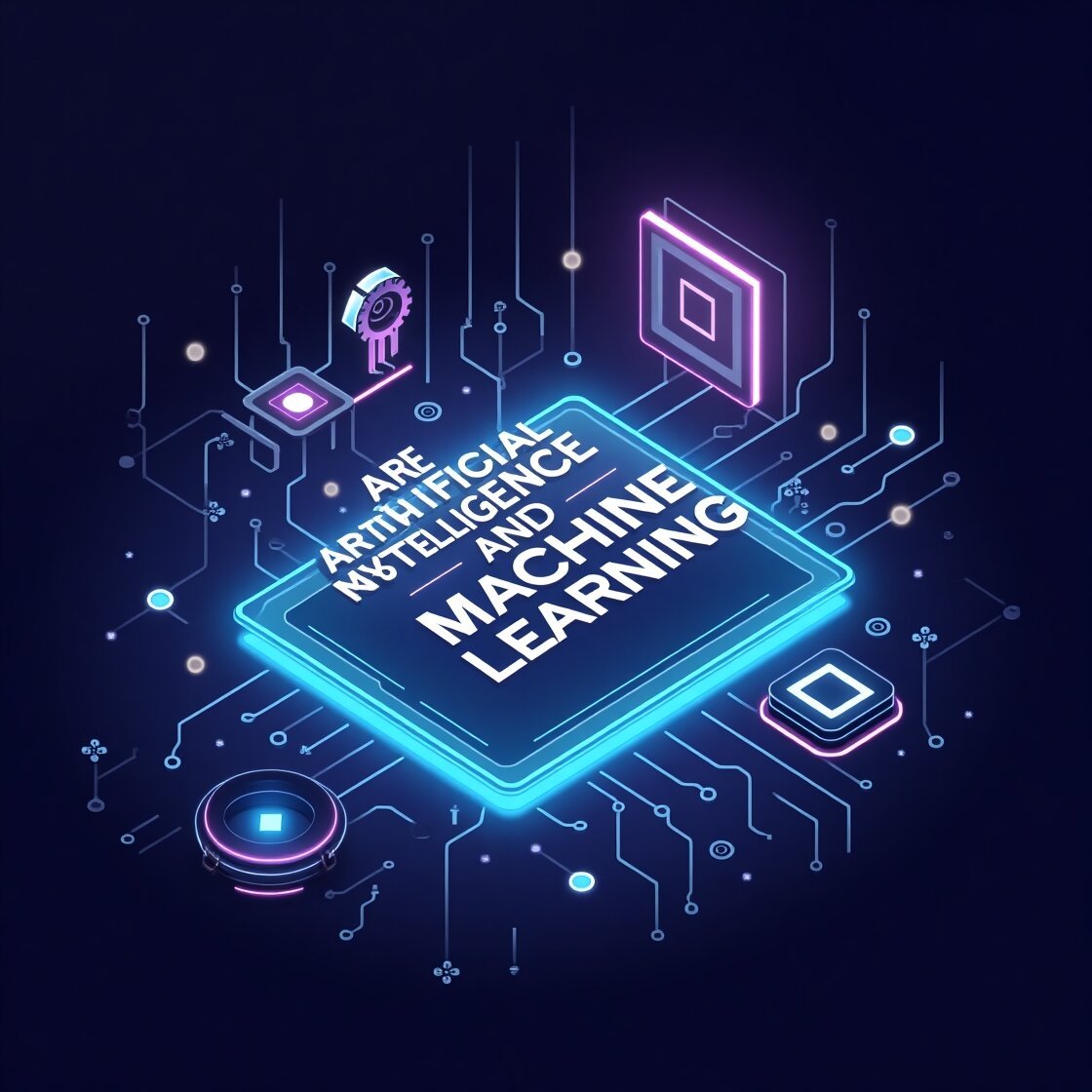

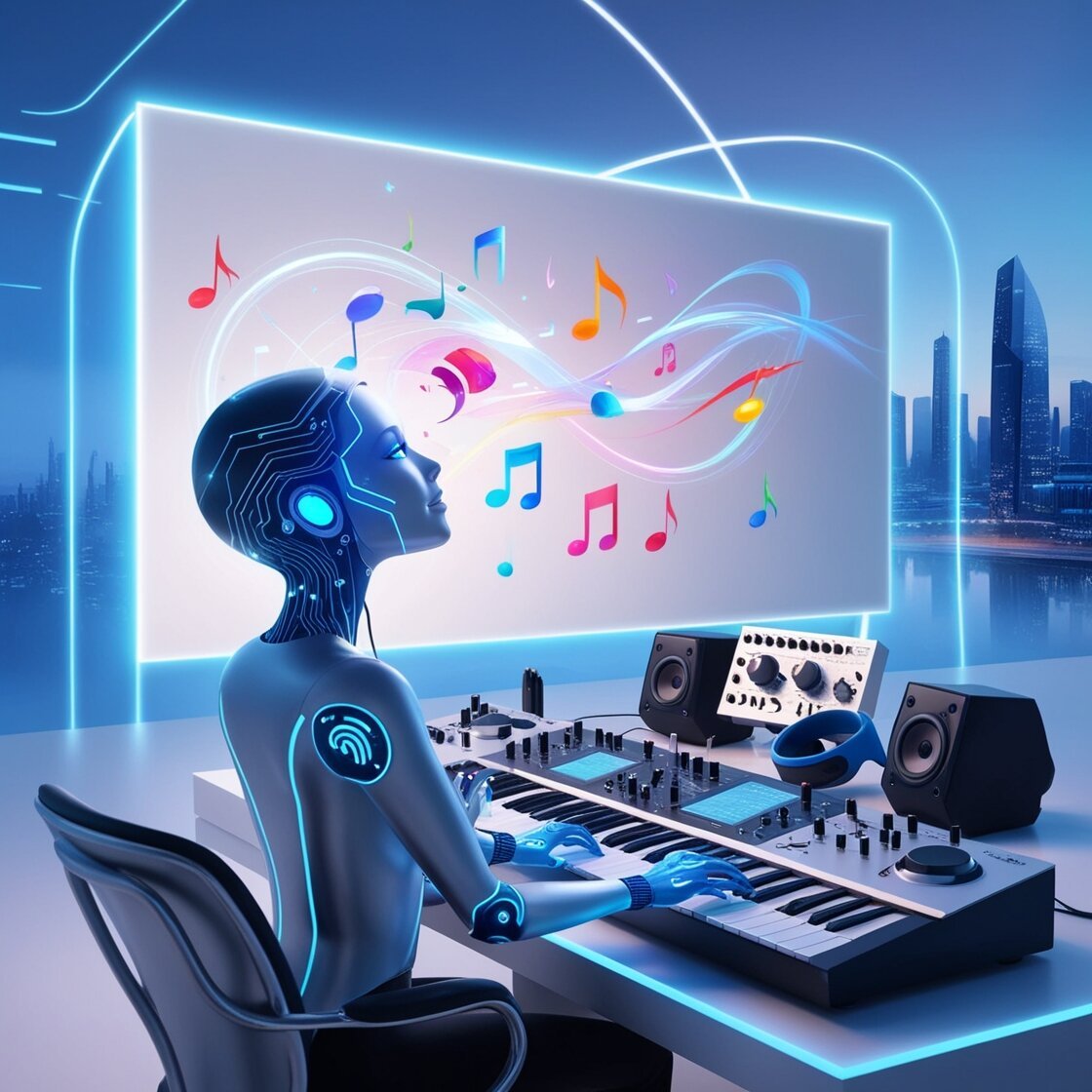



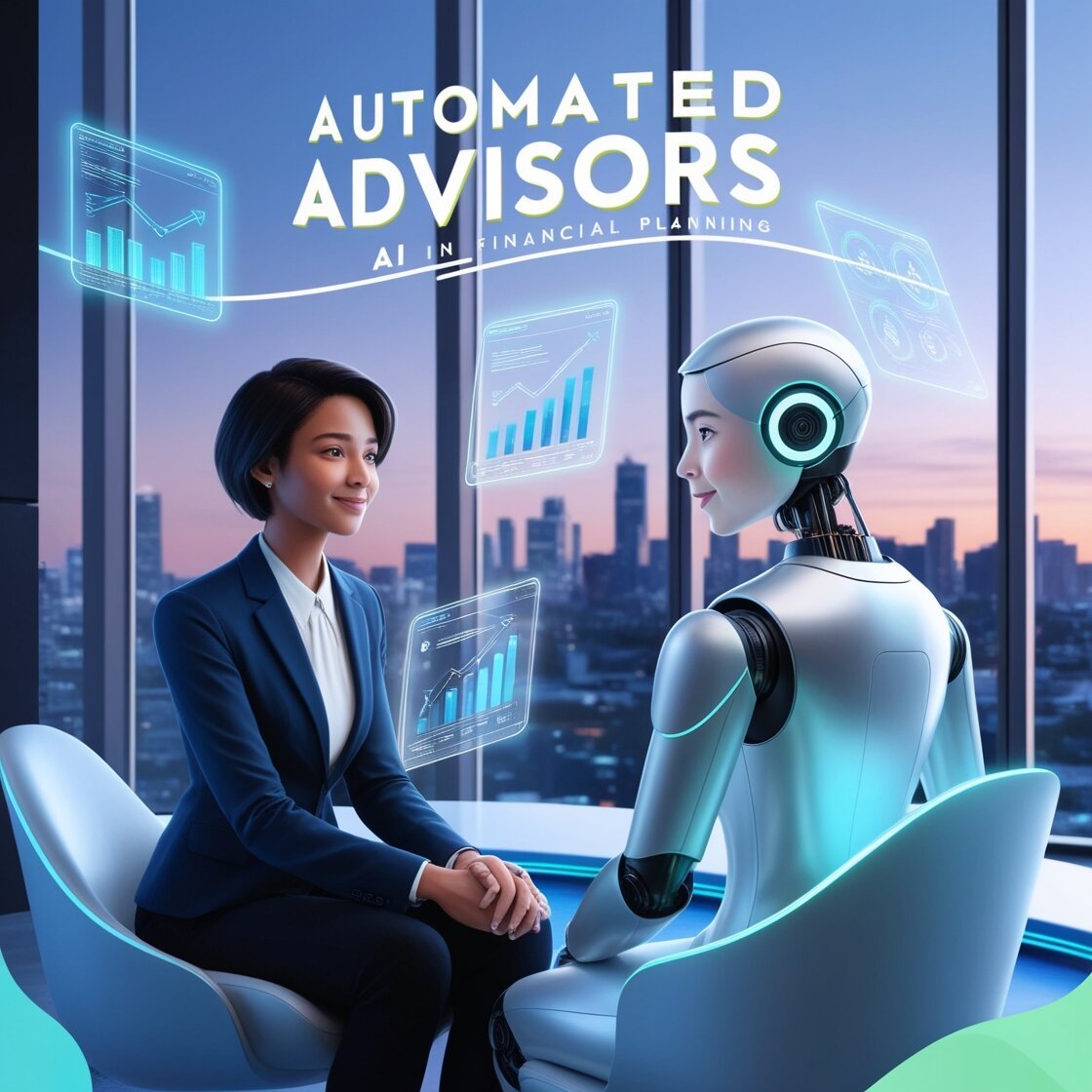
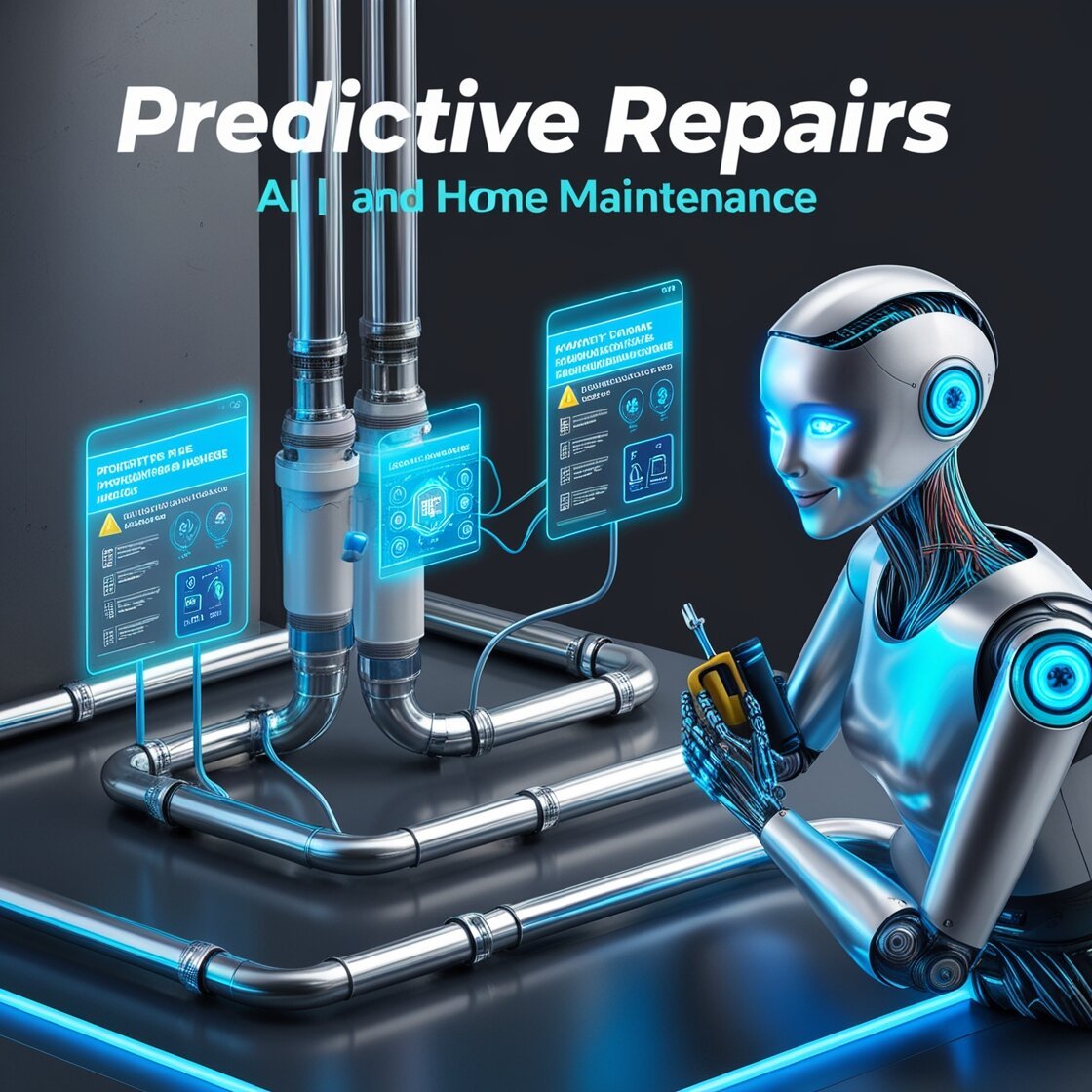
.jpg.9a602e1ae1f42713c40d92c6661f5738.jpg)


